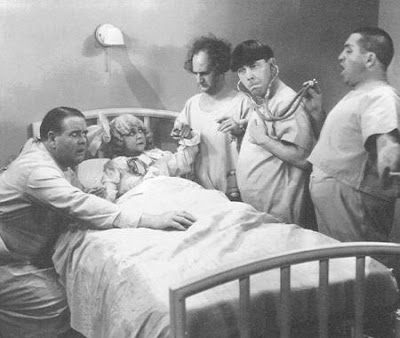Also posted over at Paramedicine 101. Go check out the rest of what is there.
In the article I was writing about[1] (Experts Debate Paramedic Intubation) in my post Experts Debate Paramedic Intubation – JEMS.com, there is a bit of defense of the status quo in intubation and intubation training.
We get hung up on many of the same problems. We think that there is one right way to do things, rather than accept that we are adapting what we do to the different circumstances we are faced with.
We act as if the OR (Operating Room) is the only place that we can obtain good practice. There is no evidence to support this.
There is nothing to show that OR training is superior to morgue training and mannequin training, but we act as if the decreased availability of OR time is the only reason medics can’t intubate competently.
We act as if the only problem with the way we are teaching paramedic school is that the students are not learning. As if this is not a reflection on the teaching.
Teaching means providing information to students in a way that helps the students to understand. If the students do not understand, the teacher did not teach.
Perhaps you do not believe that we do a poor job at intubation education.
Results
Nine hundred twenty-six patients had an attempted intubation. Methods of airway management were determined for 97.5% (825/846) of those transported to a hospital and 33.8% (27/80) of those who died in the field. For transported patients, 74.8% were successfully intubated, 20% had a failed intubation, 5.2% had a malpositioned tube on arrival to the ED, and 0.6% had another method of airway management used. Malpositioned tubes were significantly more common in pediatric patients (13.0%, compared with 4.0% for nonpediatric patients).
Conclusions
Overall intubation success was low, and consistent with previously published series. The frequency of malpositioned ETT was unacceptably high, and also consistent with prior studies. Our data support the need for ongoing monitoring of EMS providers’ practices of endotracheal intubation.[2]
Those numbers may be considered good in many areas – batting average, picking winning stocks, votes in an election. When it comes to airway management, we would be more appropriate if we described failure rates.
These failure rates are unacceptably high.
Overall intubation success was low, and consistent with previously published series.
In other words, the authors believe that this is the expected result of the way we train paramedics to intubate.
Can anyone show that this is not true?
The frequency of malpositioned ETT was unacceptably high, and also consistent with prior studies.
This is the expected result of the way we train paramedics to intubate.
Our data support the need for ongoing monitoring of EMS providers’ practices of endotracheal intubation.
5.2% had a malpositioned tube on arrival to the ED.
5.2% Unrecognized Esophageal Intubations!
Ongoing monitoring Watching is not enough.
We need to dramatically change the way we handle intubation education.
Footnotes:
[1] Experts Debate Paramedic Intubation – Should paramedics continue to intubate?
JEMS.com
Bryan E. Bledsoe, DO, FACEP, FAAEM | Darren Braude, MD, MPH, FACEP, EMT-P | David K. Tan, MD, FAAEM, EMT-T | Henry Wang, MD, MS | Marc Eckstein, MD, MPH, FACEP | Marvin Wayne, MD, FACEP, FAAEM | William E. Gandy, D, LP, NREMT-P
Thursday, July 1, 2010
Article
[2] A prospective multicenter evaluation of prehospital airway management performance in a large metropolitan region.
Denver Metro Airway Study Group.
Colwell CB, Cusick JM, Hawkes AP, Luyten DR, McVaney KE, Pineda GV, Riccio JC, Severyn FA, Vellman WP, Heller J, Ship J, Gunter J, Battan K, Kozlowski M, Kanowitz A.
Prehosp Emerg Care. 2009 Jul-Sep;13(3):304-10.
PMID: 19499465 [PubMed – in process]
.
.jpg)



Subscribe to RogueMedic.com